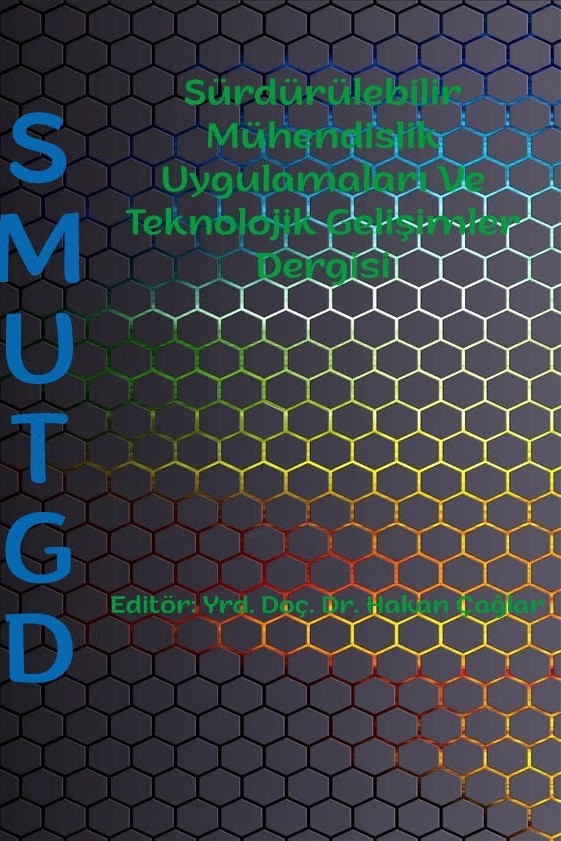Review study on the use of Boric Acid in concrete
Boric acid, Borogypsum waste, Concrete structure, Concrete
Review study on the use of Boric Acid in concrete
Boric acid, Borogypsum waste, Concrete structure, Concrete,
___
- 1- Kunt, K., Dur, F., Ertınmaz, B., Yıldırım, M., Derun, E. M., & Pişkin, S. (No Date). Utilization of Boron Waste as an Additive for Cement Production.2- Larsen, P. B., Nielsen, B. S., Fotel, F. L., Kortegaard, P., Slothuus, T., & Hjelmar, O. (2015). Survey of Boric acid and sodium borates (borax).3- Sevim, U.K.; Tümen, Y. Strength and fresh properties of borogypsum concrete. Construction and Building Materials. 2013; 48, 342-347.4- Bajza, A., I. Rouseková, and M. Dubík. “Can Boric Acid Corrode Concrete?” V. Bilek and Z. Kersner, eds. International Symposium on Non-Traditional Cement and Concrete, Brno University of Technology, Brno, Czech Republic. pp. 447–456. 2002.5- Jin, X., N. Jin, and Y. Tian. “Study on the Behavior and Durability of Reinforced Concrete in Boric Acid Environment.” Key Engineering Materials. Vols. 400–402. pp. 441–446. 2009.6- Bothe, J.V. and P.W. Brown. “Kinetics of Tricalcium Aluminate Hydration in the Presence of Boric Acid and Calcium Hydroxide.” Journal of the American Ceramic Society. Vol. 82. pp. 1,882–1,888. 1999.7- Simons, J., R. Keating, J. Nestell, and M. Frey. “Repair and Replacement Applications Center: Boric Acid Attack of Concrete and Reinforcing Steel in PWR Fuel Handling .8- Kavas, T.; Olgun, A.; Erdoğan, Y. Setting and hardening of borogypsum- Portland cement .9- Elbeyli, İ.Y. Utilization of industrial borax wastes (BW) for portland cement production. Turkish J. Eng. Env. Sci. 2004; 28, 281-287.10- Pabalan, R., Yang, L., & Chiang, K. T. (2013). Boric acid corrosion of concrete rebar. Paper presented at the EPJ Web of Conferences.11- Mutuk, T.; Mesci, B. Analysis of mechanical properties of cement containing boron waste and rice husk ash using full factorial design. Journal of Cleaner Production. 2014; 69, 128-132.12- W. Ramm and M. Biscoping, Nuclear Engineering and Design 179, 191 (1998) 13- Buildings.” Report 1019168. Palo Alto, California: Electric Power Research Institute. 2009.14- J.D. Dillard and J.O. Glanville, Composition and Method for Combatting Chloride-Induced Corrosion in Steel in Reinforced Concrete. U.S. Patent Number 5,092,923. Issued March 3, 1992.15- Kosmatka, Steven & Kerkhoff, Beatrix & C. Panarese, William. (2002). Design and Control of Concrete Mixtures.16- Davraz, M., KİLİNÇARSLAN, Ş., & Pehlivanoğlu, E. (2014). The Effects of Accelerating Admixture on the Mechanical Properties of Boric Acid Added Mortars. Acta Physica Polonica, A., 125 .17- Mohamed Hasan, Seraj Yousef & Mazin Nassar ,2011.Studying the effect of organic and non - organic additives in the radiation and mechanical properties of radiation shielding. Syrian Atomic Energy Commission .18- Davraz, M. (2015). The Effect of Boron Compound to Cement Hydration and Controllability of this Effect. Acta Physica Polonica, A., 128.19- CNWRA.(2011).Final Report on Boric Acid Degradation of Reinforced Concrete.Geosciences and Engineering Division .20- M. F. Kaplan., Concrete Radiation shielding, Longman Scientific & Technical, England. 1989.21- Demirbaş, A., & Karslioǧlu, S. (1995). The effect of boric acid sludges containing borogypsum on properties of cement. Cement and Concrete Research, 25(7), 1381-1384.22- RPA (2008). Assessment of the Risk to Consumers from Borates and the Impact of Potential Restrictions on their Marketing and Use. Final Report prepared for European Commission. DG Enterprise and Industry.
- ISSN: 2651-3544
- Yayın Aralığı: Yılda 2 Sayı
- Başlangıç: 2018
- Yayıncı: Hakan ÇAĞLAR
Review study on the use of Boric Acid in concrete
Abudalrhman Mohamed BSHER ALDAKSHE
Türkiye’nin İyotça Zengin Suları ve Kara Alanlarının Petrol ve Doğalgaz Potansiyeli
Bir Akaryakıt İstasyonunun Risk Analizinin Yapılması ve İş Güvenliği Açısından Değerlendirilmesi
ONUR ESER KÖK, Yasin Erdoğan, Serkan Babaoğlu
BURSA İLİ SÜRDÜRÜLEBİLİR KENT YÖNETİMİ
SU YÖNETİMİ VE SUYUN SÜRDÜRÜLEBİLİRLİĞİ
TERSİNE MÜHENDİSLİK TEMELLİ ARAÇ ÜST YAPI TASARIM, ANALİZ VE ÜRETİMİNİN İNCELENMESİ
Ferit İŞBİLİR, Beytullah ÇELİK, Abdullah ÖZSAN, Mustafa Fahri KAYNAK
Sismik Yükleme Altında Silindirik Çelik Su Tanklarının Gerilme ve Burkulma Analizi
Ali İhsan ÇELİK, Tahir AKGÜL, Ahmet Celal APAY, Adem YURTSEVER
